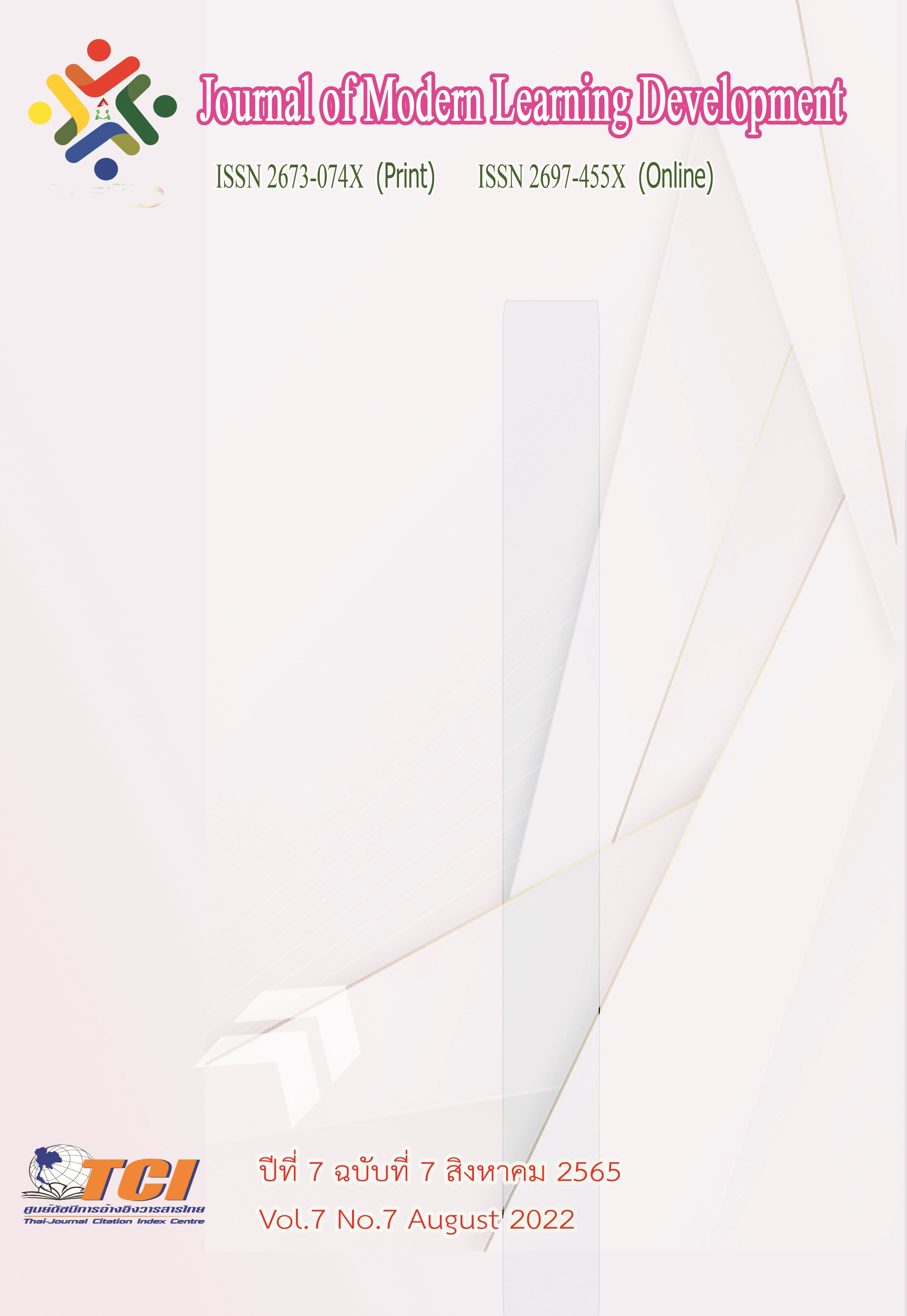A Study of environmental conservation factors of water bottles’ consumers in Khon Kaen Province
Main Article Content
Abstract
The objectives of this research were 1) to study environmental conservation factors, namely the knowledge of waste sorting, reducing the amount of waste from water bottles, reusing and recycling water bottles of bottled water consumers in Khon Kaen, 2) to analyse the exploratory factors of 3Rs, and 3) to propose guidelines for creating a policy for the management of used drinking water bottle in Khon Kaen. The data were collected by a questionnaire from a sample group of 400 people in Khon Kaen Province. Data were analysed by descriptive statistics and exploratory factor analysis.
The results revealed that people in Khon Kaen had the highest level of waste sorting knowledge. There was a high level of opinion on the recycling of bottled water, followed by the reusing of bottled water at a high level and reducing the amount of waste from used bottled water is also at a high level. Furthermore, the findings of the exploratory factor analysis can be separated into 3 factors, i.e., 1) knowledge of waste sorting, 2)reducing the amount of waste from water bottles, and 3) reusing and recycling water bottles. The outcomes of the study can apply to develop a guideline for creating a policy on waste management from drinking water bottles and create public relations media to educate people in the area.
Article Details
References
กรมควบคุมมลพิษ. (2564). ข้อมูลสถานการณ์ขยะมูลฝอยของประเทศ 2563. ออนไลน์. สืบค้นเมื่อ 5 มกราคม 2565. แหล่งที่มา: https://thaimsw.pcd.go.th/report_country.php.
กองแผนและงบประมาณ อบจ.ขอนแก่น.(2563). ข้อมูลท้องที่และประชากรในจังหวัดขอนแก่น ณ วันที่ 31 มีนาคม 2563. ออนไลน์. สืบค้นเมื่อ 6 มกราคม 2565. แหล่งที่มา: http://www.kkpao.go.th/ dep/kkpao_ plan/E-PlanData/?mod=index&file=datacat2-2
กัลยา วานิชย์บัญชา. (2555). สถิติสำหรับงานวิจัย. กรุงเทพมหานคร: ศูนย์หนังสือแห่งจุฬาลงกรณ์มหาวิทยาลัย.
กัลยา วานิชย์บัญชา. (2557). การวิเคราะห์สมการโครงสร้าง (SEM) ด้วย AMOS. กรุงเทพมหานคร: ศูนย์หนังสือแห่งจุฬาลงกรณ์มหาวิทยาลัย.
ฐิติรัตน์ มานิพารักษ์. (2563). การบริหารจัดการขยะมูลฝอยตามหลัก 3R ของพื้นที่เขตกรุงเพทฯ ตะวันออก. วารสารการบริหารการปกครองและนวัตกรรมท้องถิ่น. 4 (1), 157-169.
ไทยพับลิก้า. (2564). สถานการณ์ขยะของไทย วิกฤติขยะ 26 ล้านตัน กำจัดได้อย่างถูกต้องแค่ 7.2 ล้านตัน.ออนไลน์. สืบค้นเมื่อ 29 ตุลาคม 2564. แหล่งที่มา: https://thaipublica.org/2014/09/thailands-garbage-crisis/
ธานินทร์ ศิลป์จารุ. (2560). การวิจัยและวิเคราะห์ข้อมูลทางสถิติด้วย SPSS และ AMOS. กรุงเทพมหานคร: ห้างหุ้นส่วนสามัญบิสซิเนสอาร์แอนด์ดี
พัชรพล หนูนารถ, กันตภณ หนูทองแก้ว และเดชชาติ ตรีทรัพย์. (2562). การจัดเก็บขยะมูลฝอยของประชาชนตามหลัก 3R ในเทศบาลตำบลชะมาก อำเภอทุ่งสง จังหวัดนครศรีธรรมราช.วารสารสังคมศาสตร์และมานุษยวิทยาเชิงพุทธ. 4 (2), 34-48.
ภัทรมาศ เทียมเงิน. (2560). การสำรวจทัศนคติในการจัดการขยะมูลฝอยของนักศึกษา อาจารย์และบุคลากรภายในมหาวิทยาลัยเทคโนโลยีราชมงคลสุวรรณภูมิ (ศูนย์นนบุรี). การประชุมวิชาการระดับชาติ มหาวิทยาลัยเทคโนโลยีราชมงคลสุวรรณภูมิครั้งที่ 1. 1050-1059.
สันชัย พรมสิทธิ์. (2562). การจัดการขยะขององค์กรปกครองท้องถิ่น ขนาดใหญ่ กลาง เล็ก ในภาคตะวันออกเฉียงเหนือ. วารสารวิชาการและวิจัยมหาวิทยาลัยภาคตะวันออกเฉียงเหนือ. 9 (1), 67-81.
เสาวภัค วันสนุก. (2562). การศึกษารูปแบบถังขยะที่เหมาะสมในการคัดแยกขยะของคณะศิลปะศาสตร์ มหาวิทยาลัยพะเยา. วิทยานิพนธ์ปริญญารัฐประศาสนศาสตรมหาบัณฑิต สาขาวิชานโยบายสาธารณะ. บัณฑิตวิทยาลัย: มหาวิทยาลัยพะเยา.


